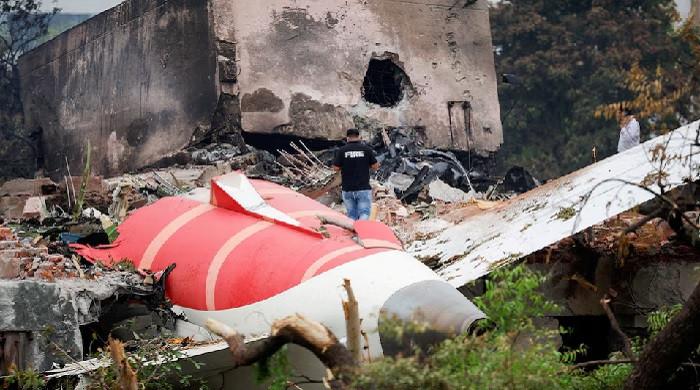- Boeing 787 accident killed 260 people last month.
- The pilots experienced, they are not clear how fuel switches moved.
- The report says that one pilot asked the other why he cut the fuel.
A preliminary report represented the confusion in the cabin shortly before an Air India plane crashed, killing 260 people last month, after the fuel cutting switches of the plane’s engine changes almost simultaneously, hungrying the fuel engines hungry.
The Boeing 787 Dreamliner bound for London of the Indian city of Ahmedabad immediately began to lose thrust and sink, according to the report on the most fatal aviation accident in the world in a decade published on Saturday by researchers from Indian accidents.
The Report of the Office of Accident Research of Aircraft of India (AAIB) on the June 12 accident shortly after the takeoff poses new questions about the position of the critical fuel cutting switches of the engine, while suggesting that Boeing and the GE engines manufacturer did not have an apparent responsibility for the accident.
The accident is a challenge for the ambitious Tata Group campaign to restore the reputation of Air India and renew its fleet, after taking the government carrier in 2022.
Almost immediately after the plane took off from the ground, CCTV images show a backup energy source called RAM air turbine had been deployed, indicating a loss of energy from the engines.
At the final moment of the flight, a pilot was heard in the voice recorder of the cabin asking the other why he cut the fuel. “The other pilot replied that he did not,” the report said.
He did not identify what comments were made by the captain of the flight and which by the first officer, or what pilot “Mayday, Mayday, Mayday” transmitted just before the accident.
The dominant pilot of the Air India aircraft was Sumeet Sabharwal, 56, who had a total flight experience of 15,638 hours and, according to the Indian government, was also an instructor of Air India. His co -pilot was Clive Kunder, 32, who was 3,403 hours of total experience.
The fuel switches had almost simultaneously turned to run to cut just after takeoff. The preliminary report did not say how the switches could have returned to the cutting position during the flight.
Experts have said that a pilot could not accidentally move fuel switches.
“If they were transferred by a pilot, why?” Aviation security expert Anthony Brickhouse asked us.
The switches deviated a separate second, according to the report, approximately the time it would change one and then the other, according to the American aviation expert John Nance. He added that a pilot would never turn off the blackouts in flight, especially because the plane is starting to climb.
Turning to the cut almost immediately cut the engines. It is used more frequently to disconnect the engines once a plane has reached the door of its airport and in certain emergencies, such as a fire in the engine. The report does not indicate that there was any emergency that requires a motor cut.
At the scene of the accident, both fuel switches were found in the execution position, and there were indications that both engines relieve before the low altitude accident, said the report, which was launched around 1:30 am ist on Saturday (2000 GMT on Friday).
Air India recognized the report in a statement. The carrier said he was cooperating with the Indian authorities, but rejected more comments.
The National Transport Security Board of USA.
The Federal Aviation Administration of the United States said that its priority was to follow the facts in which they led, and promised to quickly address any risk identified throughout the process.
Boeing said he continued to support the investigation and his client, Air India. GE Aerospace did not immediately respond to a request for comments.
Locking probe
The AAIB, an office under the Ministry of Civil Aviation of India, leads the investigation of the accident, which killed all except one of the 242 people on board and another 19 in the field.
Most air accidents are caused by multiple factors, with a preliminary report that is due 30 days after the accident in accordance with international rules, and a final expected report within a year.
The black boxes of the plane, the combined voice recorders of the cabin and the flight data recorders, recovered in the days after the accident and then discharged in India.
Black boxes provide crucial data such as altitude, air speed and final pilot conversations, which help reduce the possible causes of the accident.
Air India has been under intense scrutiny since the accident.
The European Union Aviation Security Agency said it plans to investigate its budget airline, Air India Express, after Reuters reported that the carrier did not follow a directive to change the engine parts of an Airbus A320 immediately and falsified records to show compliance.
The Aviation Control Agency of India also warned Air India for violating the rules to fly three Airbus aircraft with backward controls in the exhaust slides and, in June, he warned him about “serious violations” of tax schedules.
India is depositing in an aviation boom to support broader development goals, with New Delhi saying that it wants India to be a global work creation center in the Dubai line, which currently manages much of the country’s international traffic.




